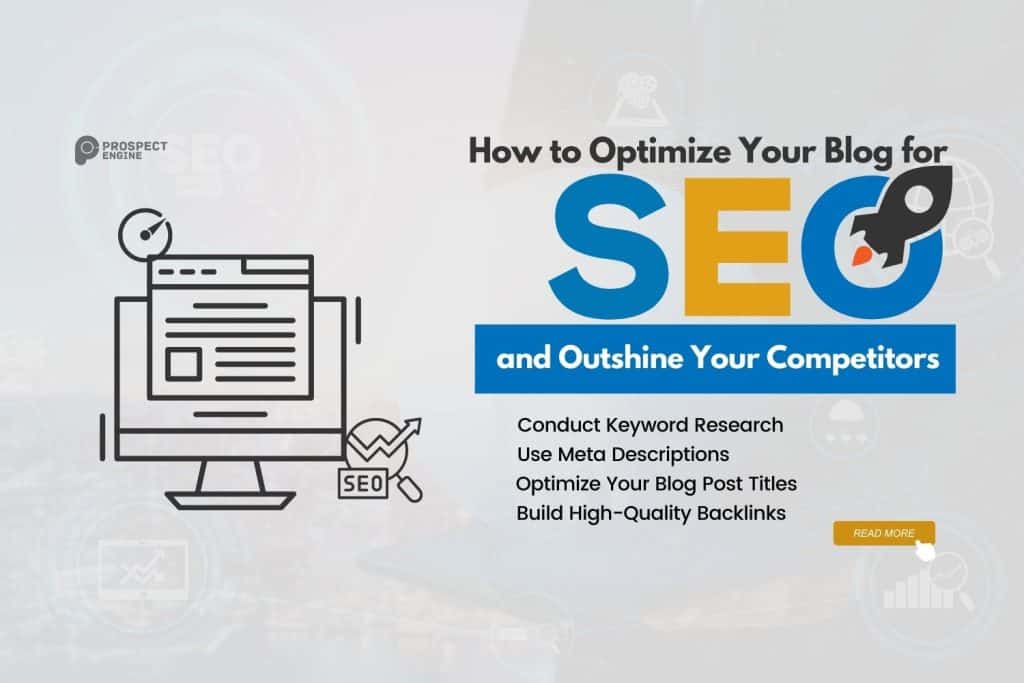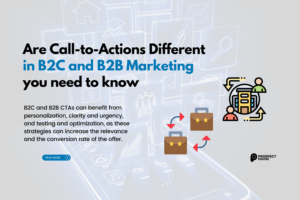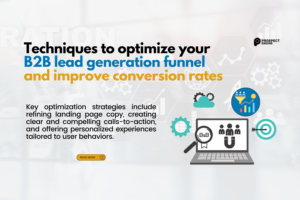In today’s digital age, having a website is insufficient to succeed in online marketing. Search engine optimization (SEO) is crucial for any website to rank higher in search engine results pages (SERPs) and increase visibility. Optimizing your blog for SEO can drive more traffic, boost your online presence, and help you stand out from competitors. In this guide, we will walk you through some key strategies and tips for optimizing your blog for SEO.
Conduct Keyword Research
Keyword research is the first and most important step in optimizing for SEO. It involves identifying the keywords your target audience is searching for. Using tools such as Google AdWords Keyword Planner or Ahrefs, you can discover the best keywords with high search volume and low competition.
Keyword research can help you determine what topics to write about, what titles to use, and what keywords to include in your content. It can also help you optimize your blog for long-tail keywords, which are longer and more specific keyword phrases that target a particular audience. Long-tail keywords have less competition and higher conversion rates, making them an excellent way to attract targeted traffic to your blog.
Optimize Your Blog Post Titles
Your post titles are the first thing readers see when searching for content online. They should be captivating, descriptive, and accurately represent your post’s content. Your titles should also incorporate your target keywords. Using your target keywords in your titles can boost your ranking in search engine results pages (SERPs) for those keywords.
Avoid using generic or vague titles that don’t provide much information. Instead, use titles that are specific and relevant to your content. You can also use numbers, questions, and emotional triggers in your tags to make them more engaging.
Write Quality Content
Quality content is essential for SEO. Google rewards websites that produce high-quality, relevant, and engaging content. When writing your blog posts, focus on providing value to your readers. Your content should be well-researched, informative, and easy to read.
One way to create quality content is to use the Skyscraper Technique. This technique involves finding a popular blog post in your niche and creating a better version. You can use tools like Buzzsumo to find popular content in your niche and then develop a more detailed and comprehensive understanding of it.
Use subheadings to break up your content and make it more scannable. Subheadings can also help search engines understand the structure of your content and what it is about. Use H1 tags for your main heading and H2 tags for your subheadings.
Use Meta Descriptions
Meta descriptions are brief text snippets that display below your post title in search engine results. They should provide a summary of your content and feature your target keywords. Meta descriptions ought to be within 150 to 160 characters and precisely portray your post’s content.
Meta descriptions are important because they can affect your click-through rate (CTR). If your meta description is engaging and accurately reflects your content, users are more likely to click through to your website. Including your target keywords in your meta description can also help your blog rank higher in SERPs for those keywords.
Optimize Your Images
Images are a great way to make your blog posts more engaging and visually appealing. However, they can also slow down your website if they’re not optimized. Large, high-resolution images can take a long time to load, affecting your website’s speed and performance.
To optimize your images, you should compress them to reduce their file size. You can use image compression tools like TinyPNG or JPEG Optimizer to compress your images without sacrificing quality.
You should also add alt tags to your images. Alt tags are short descriptions that appear when an image cannot be displayed. They help search engines understand the context of your images and can improve your blog’s SEO. Alt tags should be descriptive and include your target keywords.
Build High-Quality Backlinks
Backlinks are links from other websites to your blog. They are an important factor in SEO because they indicate to search engines that your content is valuable and authoritative. The more high-quality backlinks you have, the higher your blog will rank in search engine results pages (SERPs).
To build high-quality backlinks, you should focus on creating quality content that other websites will want to link to. You can also reach out to other bloggers in your niche and ask them to link to your content. Guest posting on other websites is another effective way to build backlinks.
Promote Your Blog on Social Media
Social media is a powerful tool for promoting your blog and driving traffic to your website. By sharing your blog posts on social media, you can reach a wider audience and attract new readers. You can also engage with your followers and build relationships with your audience.
When promoting your blog on social media, you should use engaging visuals and compelling headlines to grab users’ attention. You should also use hashtags to make your posts more discoverable and shareable. Encouraging your followers to share your content can also help increase your reach and drive more traffic to your blog.
Monitor Your Blog’s Performance
Finally, monitoring your blog’s performance and tracking your SEO efforts is important. You can use tools like Google Analytics to track your website’s traffic, bounce rate, and other metrics. This can help you identify areas where you need to improve and optimize your blog further.
You should also monitor your blog’s search engine rankings and track your progress over time. This can help you see how your SEO efforts are paying off and adjust your strategy as needed.
Conclusion
Optimizing your blog for SEO can take time and effort, but the rewards are worth it. By following these tips and strategies, you can increase your blog’s visibility, drive more traffic, and stand out from competitors. Remember to focus on quality content, keyword research, and link-building to achieve the best results. And don’t forget to monitor your performance and make adjustments as needed.






